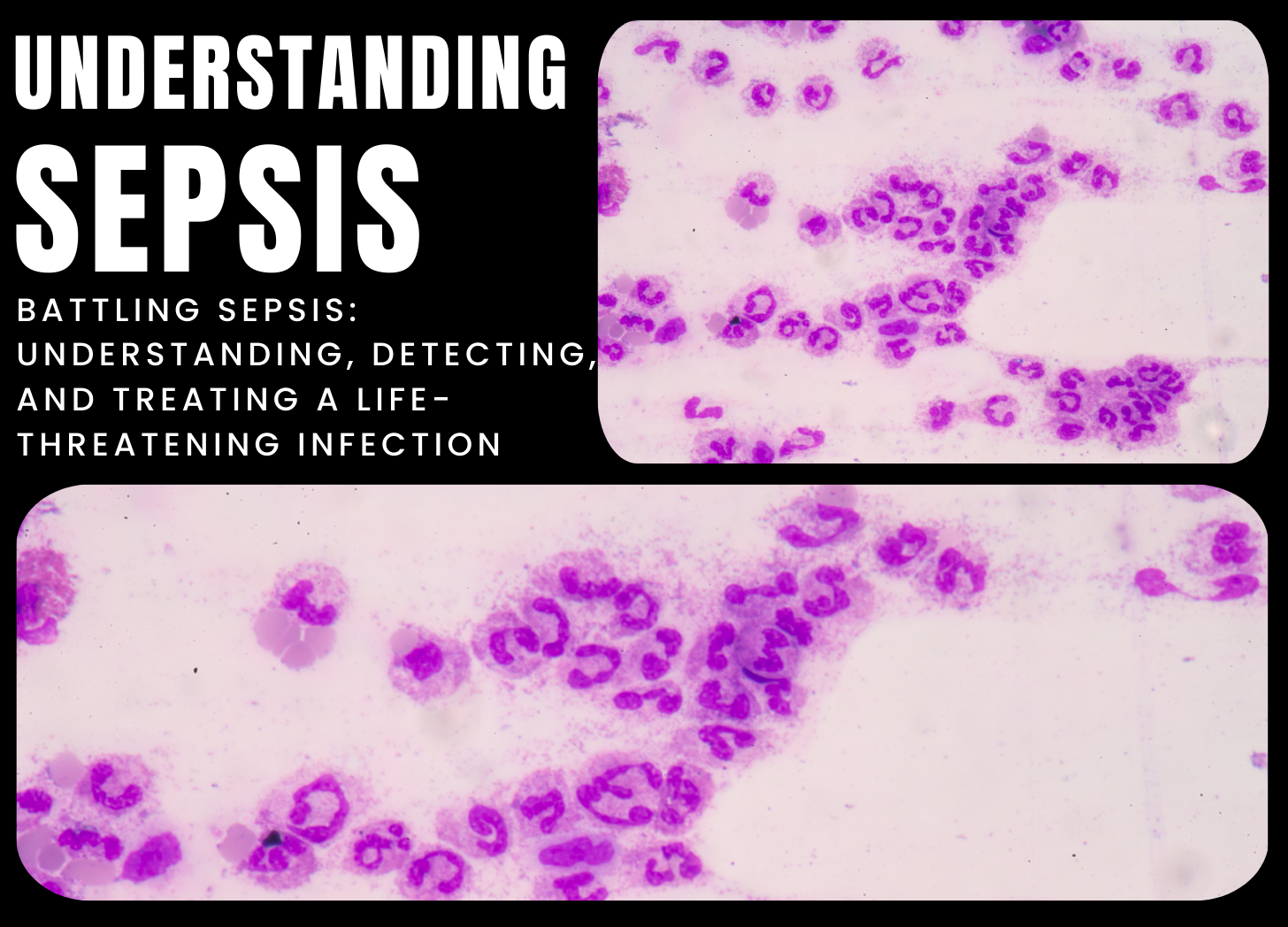Contact Us
Contact Us

Sepsis is a life-threatening illness in which the body’s response to an infection causes extensive inflammation, resulting in organ malfunction or failure. It can affect people of all ages, from infants to the elderly, and it can advance quickly, often leading to severe sepsis or septic shock if not treated right once. Sepsis can be caused by bacteria, viruses, fungi, or parasites that enter the body through a variety of routes, including the lungs (pneumonia), urinary tract (urinary tract infections), abdomen (peritonitis), or bloodstream (bacteremia).
The underlying cause of sepsis is a dysregulated immunological response to an infection, which can result in systemic inflammation, tissue destruction, and organ dysfunction. In some situations, the immune response can be excessive, resulting in sepsis syndrome or septicemia. A weakened immune system (as a result of HIV/AIDS, cancer, or immunosuppressive medications), chronic medical conditions (such as diabetes or kidney disease), age (infants and older adults are more vulnerable), and invasive medical procedures or devices (such as catheters or ventilators) are all risk factors for sepsis.
Sepsis symptoms include fever, chills, rapid breathing, high heart rate, low blood pressure, disorientation or changed mental status, decreased urine output, and evidence of organ malfunction (such as jaundice, trouble breathing, or abnormal liver or kidney function tests). Sepsis symptoms vary according to the underlying infection, the place of infection, and the severity of the disorder.
Sepsis is normally diagnosed with a comprehensive medical history, physical examination, and diagnostic testing such as blood cultures, complete blood count (CBC), and organ function tests. Chest X-rays or ultrasounds may be used to determine the source of the infection or to screen for consequences such as pneumonia or abscessed organs.
Sepsis treatment includes early detection, aggressive supportive care, and quick prescription of antibiotics or antifungal drugs to combat the underlying illness. Severe cases of sepsis or septic shock may necessitate ICU admission and supportive measures such as intravenous fluids, vasopressor medications (to raise blood pressure), mechanical ventilation (to support breathing), or renal replacement therapy (such as dialysis) in order to stabilize the patient and prevent further organ damage.
To summarize, sepsis is a life-threatening illness caused by systemic inflammation and organ malfunction in response to an infection. Early detection, rapid treatment, and supportive care are critical for improving outcomes and minimizing death in sepsis patients. Healthcare providers and the general public can assist save lives and avoid complications linked with sepsis by raising knowledge about its signs and symptoms and supporting early action.
References:
1.National Institute of General Medical Sciences. (2022). Sepsis Fact Sheet. Retrieved from https://www.nigms.nih.gov/education/fact-sheets/Pages/sepsis.aspx
2.Centers for Disease Control and Prevention. (2022). Sepsis. Retrieved from https://www.cdc.gov/sepsis/index.html
Post a Comment